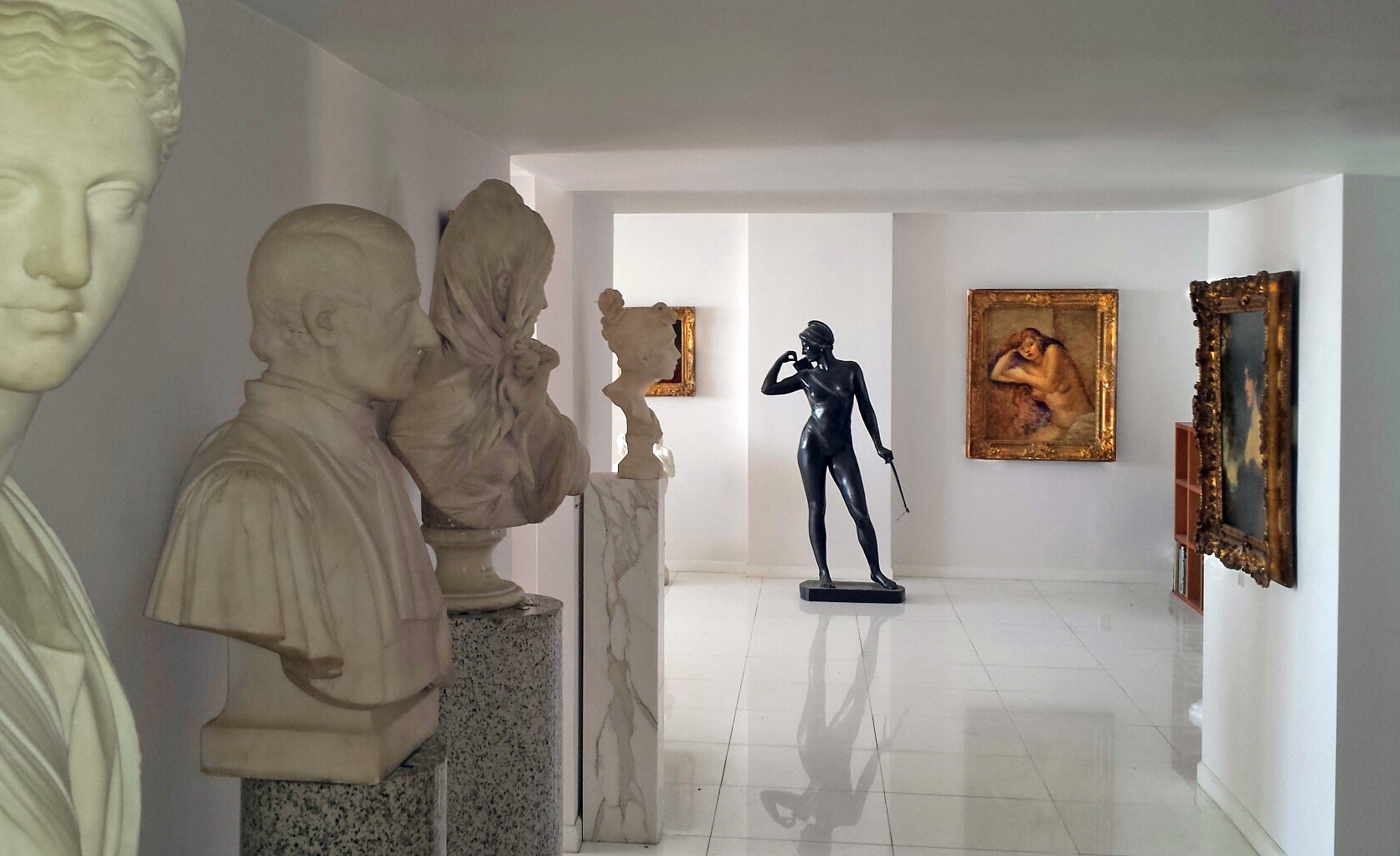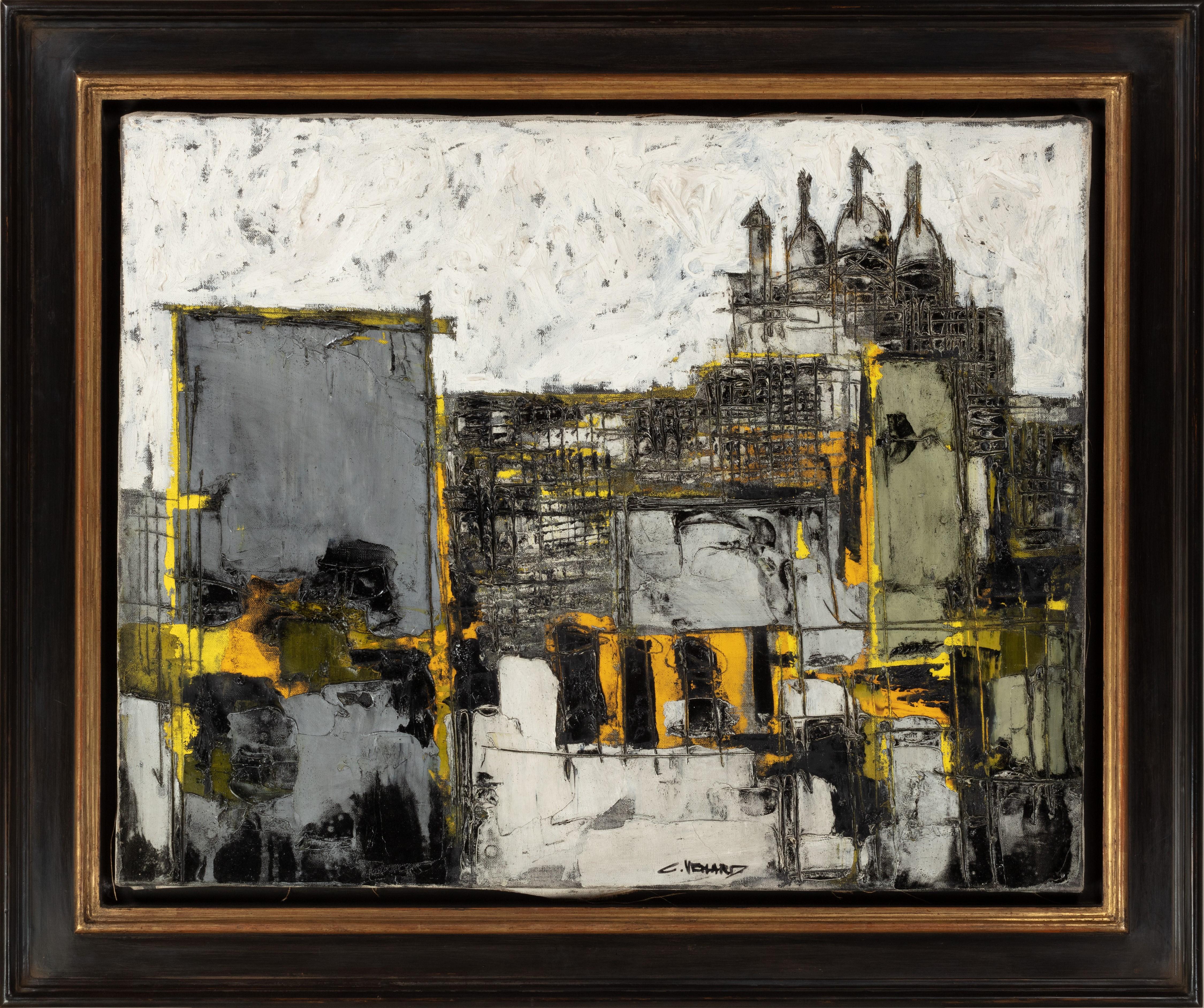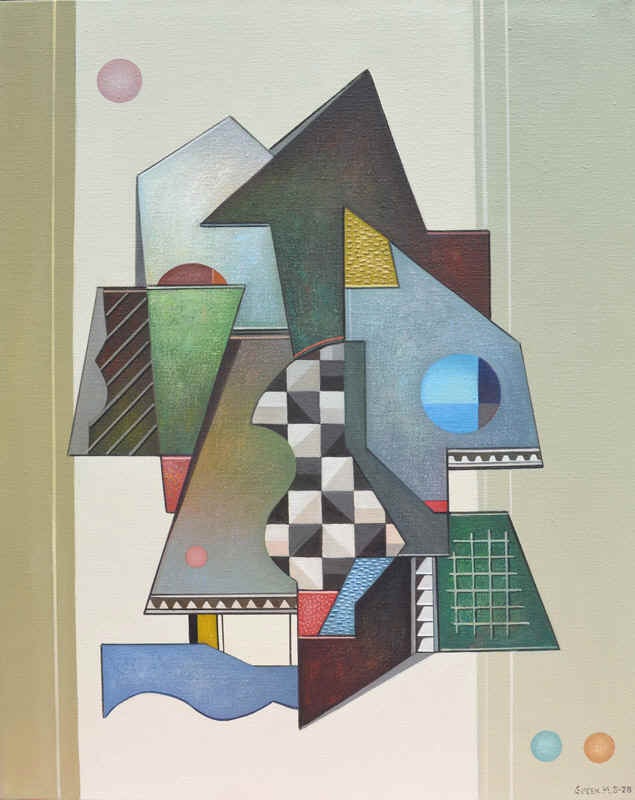Items Similar to The Burning Castle
Want more images or videos?
Request additional images or videos from the seller
1 of 15
Stefan HirschThe Burning Castle1944
1944
About the Item
Exhibited: The North Carolina Museum of Art , October, 1967
Exhibited: November 5th to December 4, 1977
Titled: Study for Gomorrah, 1944
His work is in the collections of: Phillips Collection, The Whitney Museum of American Art, the Metropolitan Museum of Art, and the Corcoran Gallery
Housed in Period Frame.
- Creator:Stefan Hirsch (1899 - 1964, American)
- Creation Year:1944
- Dimensions:Height: 22 in (55.88 cm)Width: 27.5 in (69.85 cm)
- Medium:
- Movement & Style:
- Period:
- Condition:some light surface dirt.
- Gallery Location:Miami, FL
- Reference Number:1stDibs: LU3853998343

About the Seller
4.9
Platinum Seller
These expertly vetted sellers are 1stDibs' most experienced sellers and are rated highest by our customers.
Established in 2005
1stDibs seller since 2016
Typical response time: 1 hour
- ShippingRetrieving quote...Ships From: Miami, FL
- Return PolicyA return for this item may be initiated within 3 days of delivery.
More From This SellerView All
- Morningside Park, New York - Cathedral of St. John the DivineBy Lucille CorcosLocated in Miami, FLCorcos paints what appears to be the northern part Central Park from an elevated view looking northwest. The artist used a restricted palette of warm browns and grays with heavy outl...Category
1920s Modern Landscape Paintings
MaterialsCanvas, Masonite, Oil
- Landscape Abstraction - Mid-Century - Twenty Paintings in OneLocated in Miami, FLAt the height of Abstraction Expressionism, overlooked Academic Artist John Atherton created a wonderfully complex painting that embodies many of the characteristics of what was going on in Mid-Century American Art. The work is simultaneously abstract as it is representational. Like a Bento Box, it's divided into sections by dividers. On close inspection, each section stands on it's own as a beautiful mini-painting yet coalesces as part of the whole. From a distance, it is eye-pleasing, but as the view gets closer and closer, new structures and details gloriously reveal themselves. This is an important painting and not unlike the work of Joaquín Torres-García. It was done in the last year of the artist's life. Signed lower right. Canvas is relined. Framed size: 30 x 41.25. The work is best viewed with top gallery lights to bring out color. Atherton exhibited at the famous Julien Levy Gallery in New York and his fine art is mainly associated with Magic Realism. He participated in the seminal 1943 Museum of Modern Art exhibition, American Realists and Magic Realists. The Museum of Modern Art has 4 Atherton paintings in its collection. As an Illustrator, Atherton did covers for the Saturday Evening Post, Fortune and Holiday Magazine...Category
1950s Abstract Expressionist Abstract Paintings
MaterialsCanvas, Oil
- Industrial LandscapeBy George LuksLocated in Miami, FLQuick and confident brush strokes describe the gritty forms of perhaps steam engines or railroad yards. Luks bravura style of putting paint to canvas anticipates action painting of ...Category
1930s Abstract Expressionist Landscape Paintings
MaterialsOil
- Storm Composition #3By Abraham RattnerLocated in Miami, FLAn early example of Abstract Expressionism executed in 1955 during the movement's heyday and it's period of peak inventiveness. However, this work is still rooted in representation. The dark area the runs along the base of the picture is the ground and to the left, right and center there are black structures that represent trees. The work is very tactile and is composed of globs of paint that grow out from the surface and form a thick impasto. Rich vibrant saturated blues, reds and oranges create optical drama. The work look better in person. frame: 29 x 39 1/2 inches , Provenance: Kennedy Galleries The Currier Gallery of Art...Category
1950s Abstract Expressionist Abstract Paintings
MaterialsOil
- B.J.O. Nordfeldt - Moon in Mist - monochromatic graysBy Bror Julius Olsson NordfeldtLocated in Miami, FLNordfeldt's misty and moody monochromatic modernist landscape is reminiscent of Marsden Hartley. Signed lower right. The plaque reads B.J.O Nordfeldt "Moon in Mist - The painting l...Category
1940s Post-Impressionist Landscape Paintings
MaterialsCanvas, Oil
- New York City Rainy Night Street Scene in BlueBy Bernard LamotteLocated in Miami, FLMoody blue night with rain and wind rendered in a post-impressionist style somewhat like that of Albert MarquetCategory
1950s Post-Impressionist Landscape Paintings
MaterialsCanvas, Oil
You May Also Like
- Paris Cityscape 'Sacre Coeur Sunset', Post-Cubist style, black, white, yellowBy Claude VenardLocated in Shrewsbury, Shropshire‘Sacre Coeur Sunset' is a wonderful stark cubist cityscape - full of interesting textures and angles. The scratches into the impasto created by his paint brush are also distinctive. ...Category
Late 20th Century Cubist Abstract Paintings
MaterialsCanvas, Oil
- "Tabac" Charles Green Shaw, Tobacco, Smoking, Park Ave Cubist, AAABy Charles Green ShawLocated in New York, NYCharles Green Shaw Tabac, circa 1935 Signed on the reverse Oil on canvasboard 5 3/4 x 8 3/4 inches Provenance: Washburn Gallery, New York, 1982 Private Collection (acquired from the above) Christie's, The Collector, October 20, 2021, Lot 307 Private Collection, Scarsdale, New York (acquired directly from the above) Literature: Hilton Kramer, "Charles Shaw: In the Minimal Tradition," New York Times, February 21, 1982, Section 2, p. 25. Charles Green Shaw was born in 1892 to a wealthy New York family. He lost both his parents at a very young age; his mother died when he was just three years old. Despite the early loss of his parents, Shaw lived the whimsical life of a New York socialite. As a beneficiary to an inheritance based in part upon the Woolworth fortune, he was brought up surrounded by the well-bred, well-groomed and well-moneyed citizens of New York’s elite social class. His social status as an adolescent was cultivated while spending summers in Newport and attending Christmas balls at Mrs. W.K. Vanderbilt’s. At age six, Shaw began to take an interest in drawing, and by nine, he was known to have a fondness for sketching historical costumes. After graduating from Yale University in 1914, Shaw spent a year studying at Columbia University’s School of Architecture. Subsequently he served for eighteen months as a Lieutenant in World War I. After his service, Shaw returned to New York and tried his hand as a businessman selling real estate, but his attempt was short lived. In the early 1920s, Shaw began his career as a journalist and novelist. He achieved professional success, writing consistently for magazines such as The New Yorker, Vanity Fair and The Smart Set. Shaw’s writing was a record of his approvals and disapprovals of the social crowd to which he belonged. His profession along with his social pedigree, brought him in contact with a number of the most significant figures of the 1920s such as, F. Scott Fitzgerald, Sinclair Lewis, George Gershwin, George Jean Nathan and the American artist George Luks. Some of his profiles included celebrity caricatures used as illustrations, these were the publics’ first look at Shaw’s artistic ability. In 1928, a collection of Shaw’s articles and interviews were published in one volume titled, The Low Down. Just previous to the stock market crash and the end of the Jazz Age, Shaw left New York and traveled to Paris and London. He arrived in Paris in 1929. In an autobiographical note Shaw suggests it was on this trip when he first began to paint seriously. London also acted as a great source of motivation for the budding artist. He began to sketch everyday in St. James’s Park, making large pastels of its vistas in the style of Cezanne. When he returned to New York in 1932, Shaw considered himself a painter. Success for Shaw came quickly with his first solo exhibition mounted at the Valentine Gallery in 1934. The following year Albert Eugene Gallatin included works by the artist in an unprecedented solo exhibition at his Gallery of Living Art at New York University. Shaw further cemented his reputation as an artist through his association and friendship with fellow abstract artists Morris and Gallatin. The trio soon was regarded as ‘the Park Avenue Cubists’. As a founding member of the American Abstract Artists, Shaw became an impassioned defender of the style. His 1938 essay in the American Abstract Artists yearbook, “A Word to the Objector”, acted as a defense against those who failed to see the illustrative quality of abstract art and scolded those who disregarded American artists as serious Abstractionists. He was also an influential force at the Museum of Modern Art, where he sat on the Advisory Board from 1936 to 1941. In the later years of Shaw’s life he continued to produce abstract paintings, yet in a more private manner. He was known to be a reserved man— a ‘gentleman’; not much is known about his personal life in these later years. During this time he maintained his career as a writer, publishing the well-known children’s book, It Looked Like Spilt Milk in 1940 and two books of poems in 1959 and 1962. In 1974, Shaw died...Category
1930s Cubist Landscape Paintings
MaterialsOil, Board
- The Golden Rule, Color Field, Abstract Geometric Landscape in Pastel Tones, 2022By Natalia RomanLocated in Barcelona, ES"The Golden Rule" is an abstract painting by Spanish artist Natalia Roman. These color field paintings are inspired by both modernist shapes of the fifties and sixties combined with ...Category
2010s Cubist Abstract Paintings
MaterialsOil Pastel, Oil, Acrylic, Watercolor, Gouache
- AscensionBy Maurice GreenLocated in West Hollywood, CAPremiering for the first time in three decades, the original paintings of American artist Maurice Green. Born in 1908 in Latvia, Maurice Green studied with prominent artists of the d...Category
1970s Cubist Abstract Paintings
MaterialsCanvas, Oil
- A Cubist French City, 1919Located in Stockholm, SEDick Beer (b. London 1893 - d. Stockholm 1938) A French City, 1919 (Fransk stad) oil on canvas canvas dimensions 82x66 cm frame 94x78.5 cm signed Dick ...Category
1910s Cubist Abstract Paintings
MaterialsCanvas, Oil
- Abstract Cityscape Cubist Oil on Canvas Painting by E. PullmanLocated in Atlanta, GAFrench artist E. Pullman (France, 20th Century) designed this stylish cubist abstract cityscape oil on canvas painting. The skillful composition and rigorous construction use vivid c...Category
Late 20th Century Cubist Landscape Paintings
MaterialsOil, Canvas




